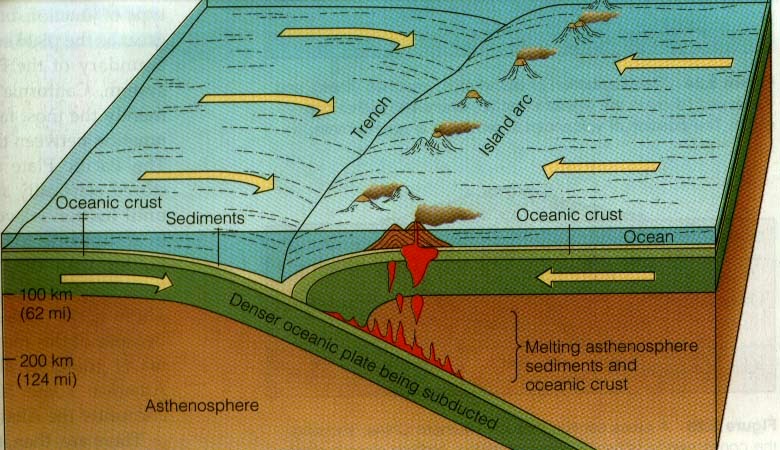Grenada is part of the Lesser Antilles volcanic island arc. It has a mountainous interior with a mixed topography of high peaks and deep, narrow valleys.
 |
Photo
taken December 2013 during my cruise to the Caribbean. In the image you can see
the mountainous landscape of Grenada.
|
About two million years ago, Grenada was a submarine volcano located along what is now known as the Lesser Antilles subduction zone. A subduction zone is a convergent boundary between two tectonic plates where the more dense plate is subducted, or sinks, under the less dense plate. In the Lesser Antilles subduction zone, the oceanic crust of the South American Plate is being subducted under the oceanic crust of the Caribbean Plate. As the South American Plate is subducted, it losses volatile materials that partially melt the mantle of the overriding plate. This generates magma that extrudes through the lithosphere of the Caribbean Plate because it is less dense, resulting in volcanic eruptions.
This ongoing process created a chain of volcanic islands, including Grenada, called the Lesser Antilles island arc.
 |
Example image of a subduction zone forming an island arc.
http://www.london-oratory.org/chemistry_folder/Revision/Earth&Rocks/New/student%20workbook%203.htm
|
 Map of the Lesser Antilles showing Grenada as part of the island arc. |
| http://whatscookinginyourworld.blogspot.com/2010/05/day-15-barbados-fried-grouper-with-cou.htm |
There are two active volcanoes of note in Grenada that are part of the volcanic chain.
 |
| Underwater image of Kick 'em Jenny https://www.youtube.com/watch?v=6EEj0Maq4q0 |
Mount Saint Catherine is the youngest of the five volcanoes in Grenada. It is a stratovolcano, so called because it is made up of different layers, or strata. This type of volcano is common in subduction zones. It has not erupted in recorded history, but there are signs of volcanic activity in that area from as long ago as two million years, during the Pliocene Period. There is a slim chance that the volcano may erupt, but for now it poses little threat to the inhabitants of the island.
 |
| Panorama image of Mount Saint Catherine http://www.panoramio.com/photo/85189254 |
References:
http://en.wikipedia.org/wiki/Caribbean_Plate
http://en.wikipedia.org/wiki/Subduction
https://www.youtube.com/watch?v=6EEj0Maq4q0
http://en.wikipedia.org/wiki/Lesser_Antilles
http://en.wikipedia.org/wiki/Grenada
http://www.renewton.plus.com/geology/talks/2012/Tale%20of%20two%20islands/index.htmhttp://en.wikipedia.org/wiki/History_of_Grenada
http://en.wikipedia.org/wiki/Island_arc
https://www.oas.org/dsd/publications/Unit/oea51e/ch06.htm
